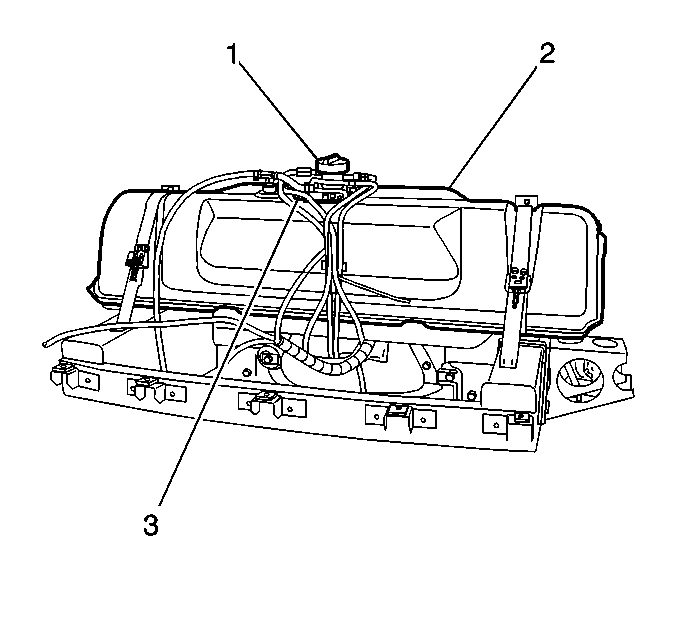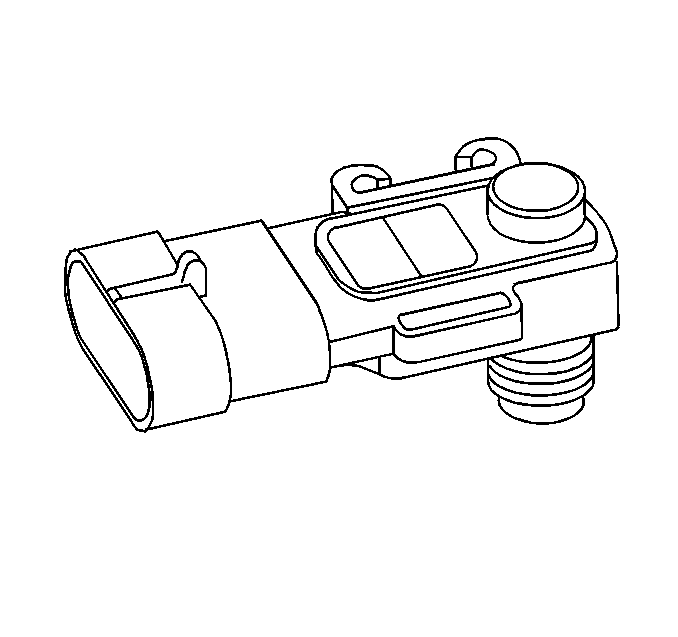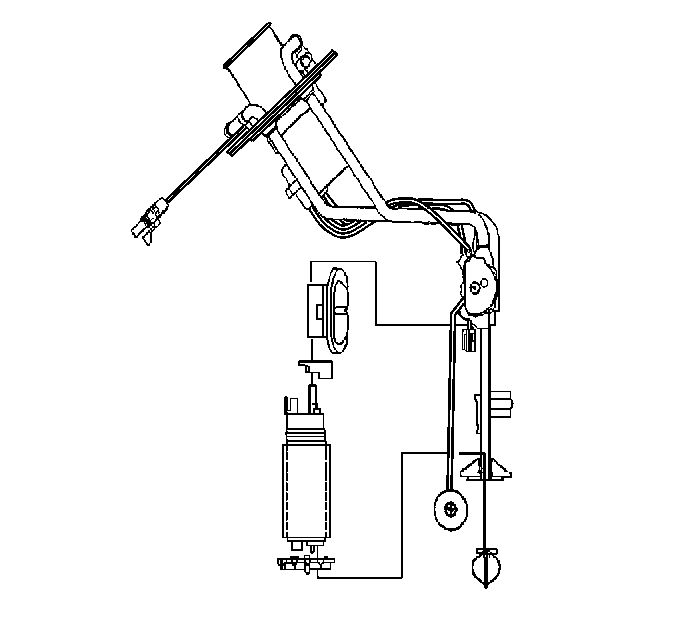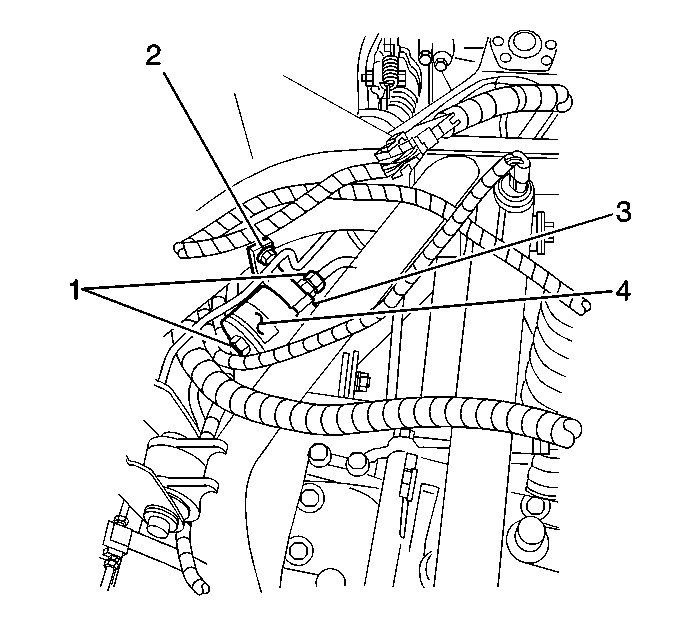Notice: Always use the correct fastener in the proper location. When you replace a fastener, use ONLY the exact part number for that application.
The applicable service procedure will identify, where necessary, those fasteners that must be replaced after removal; or those fasteners that require the use of thread locking compound or thread sealant. UNLESS OTHERWISE SPECIFIED, do not use supplemental coatings (paints, greases, or other corrosion inhibitors) on threaded fasteners or fastener joint interfaces. Generally, such coatings adversely affect the fastener torque and the joint clamping force, and may damage the fastener. When you install fasteners, use the correct tightening sequence and specifications. Following these instructions can help you avoid damage to parts and systems.Notice: Use the correct fastener in the correct location. Replacement fasteners must be the correct part number for that application. Fasteners requiring replacement or fasteners requiring the use of thread locking compound or sealant are identified in the service procedure. Do not use paints, lubricants, or corrosion inhibitors on fasteners or fastener joint surfaces unless specified. These coatings affect fastener torque and joint clamping force and may damage the fastener. Use the correct tightening sequence and specifications when installing fasteners in order to avoid damage to parts and systems.
General Description
The fuel supply is stored in the fuel tank. An electric fuel pump, inside the modular fuel sender assembly, inside the fuel tank, pumps fuel through an in-line filter to the fuel injection system. The fuel pump is designed to provide fuel at a pressure above the regulated pressure needed by the fuel injectors. A fuel pressure regulator keeps fuel available to the fuel injectors at a regulated pressure. Unused fuel is returned to the fuel tank by a separate pipe. For further information on the fuel injection system, refer to Fuel Metering System Component Description .
Unleaded fuel must be used with all gasoline engines for proper emission control system operation. Using unleaded fuel will also decrease spark plug fouling and extend engine oil life. Leaded fuel can damage the emission control system, and its use can result in loss of emission warranty coverage.
All vehicles with gasoline engines are equipped with an evaporative emission system that minimizes the escape of fuel vapors to the atmosphere. For information regarding this system, refer to Evaporative Emission Control System Operation Description .
Enhanced EVAP System Operation
The basic evaporative emission (EVAP) control system used on all vehicles is the charcoal canister storage method. This method transfers fuel vapor from the fuel tank to an activated carbon (charcoal) storage device canister to hold the vapors when the vehicle is not operating. When the engine is running, the fuel vapor is purged from the carbon element by intake air flow and consumed in the normal combustion process.
The EVAP purge valve allows manifold vacuum to purge the canister. The powertrain control module (PCM) supplies a ground to energize the EVAP purge valve (purge ON). The EVAP purge valve control is pulse width modulated (PWM) or turned ON and OFF several times a second.
The evaporative leak detection diagnostic strategy is based on applying vacuum to the EVAP system and monitoring vacuum decay. The fuel level sensor input to the PCM is used to determine if the fuel level in the tank is correct to run the EVAP diagnostic tests. To insure sufficient volume in the fuel tank to begin the various diagnostic tests, the fuel level must be between 15 percent and 85 percent. The PCM monitors system vacuum level via the fuel tank pressure sensor input.
Enhanced Evaporative Emission (EVAP) Service Port

The enhanced EVAP service port is located in the evaporative purge hose located between the purge solenoid and the EVAP charcoal canister. The service port is identified by a green colored cap. The port contains a schrader valve and fittings to allow the connection of the J 41413 evaporative pressure/purge diagnostic system. Refer to EVAP control system diagnosis for further information and diagnosis of the enhanced EVAP system.
Fuel Tank

The fuel tank is used to store fuel for the vehicle. The tank is located in the rear of the vehicle and is held in place by two straps that are attached to the vehicle frame. The fuel tank is made of metal, and is coated internally with a special corrosion inhibitor. Due to the internal coating of the fuel tank, the fuel tank is not repairable. The fuel tank shape includes a reservoir in order to maintain a constant supply of fuel around the fuel pump strainer during low fuel conditions and aggressive vehicle maneuvers.
The tank also contains a fuel vapor vent valve with roll-over protection. The vent valve also features a two phase vent calibration which increases fuel vapor flow to the canister when operating temperatures increase the tank pressure beyond an established threshold.
The fuel tank contains 3 rollover valves that prevents fuel from entering the fuel pipes in the event of a vehicle rollover. The rollover valves are not repairable.
Fuel Sender Assembly
The fuel sender assembly is located inside of the fuel tank and is attached to the top of the fuel tank. The fuel sender assembly consists of the following major components:

| • | The fuel sender (1) |
| • | The fuel pump (3) |
| • | The fuel pump strainer (4) |
| • | The fuel pulse dampener (2) |
Fuel Sender
The fuel sender consists of a filler pipe, a float, a wire float arm, a sensor, and a roll-over valve. The position of the float arm indicates the fuel level. The powertrain control module (PCM) sends a signal to the display in the vehicle instrument cluster. The EVAP pipe of the fuel sender has a pressed in roll-over valve. The roll-over valve prevents fuel from entering the evaporative emission (EVAP) canister if the vehicle rolls over by shutting off the EVAP pipe to the canister.
Fuel Pump
The fuel pump attaches to the fuel sender assembly inside the fuel tank. The fuel pump roller vane pump that produces a high pressure. The fuel pump pumps the fuel to the fuel rail assembly at a specified flow and pressure. Excess fuel returns to the fuel tank by the return pipe. The fuel pump delivers a constant flow of fuel to the engine even during low fuel conditions and aggressive vehicle maneuvers. The PCM controls the electronic fuel pump operation through a fuel pump relay.
Fuel Pump Strainer
The fuel pump strainer attaches to the lower end of the fuel pump. The fuel pump strainer is made of woven plastic. The functions of the fuel pump strainer are to filter contaminants and to the wick fuel. The fuel pump strainer is self-cleaning and normally requires no maintenance. The fuel stoppage at this point indicates that the fuel tank contains an abnormal amount of sediment or water. Clean the fuel tank, and replace a plugged fuel pump strainer with a new one.
Fuel Pulse Dampener
Installed between the fuel pump and the fuel feed pipe on the fuel sender is the fuel pulse dampener. The function of the fuel pulse dampener is to dampen the fuel pulsation and to reduce the noise generated by the fuel pump.
Fuel Tank Vapor Pressure Sensor

The fuel tank pressure sensor is used to detect small leaks in the evaporative emission system. The fuel tank pressure sensor is a three wire strain gauge sensor much like that of the common MAP sensor. However, this sensor has very different electrical characteristics due to its pressure differential design. The sensor measures the difference between the air pressure or vacuum in the fuel tank and the outside air pressure. The sensor mounts at the top of the fuel sender assembly. A three wire electrical harness connects it to the PCM. The PCM supplies a five volt reference voltage and ground to the sensor. The sensor will return a voltage between 0.1 and 4.9 volts. When the air pressure in the fuel tank is equal to the outside air pressure, such as when the fuel fill cap is removed, the output voltage of the sensor will be 1.3 to 1.7 volts. Refer to Evaporative Emission Control System Operation Description .
Fuel Sender Strainer
A woven plastic fuel sender strainer is attached to the lower end of the fuel sender in the fuel tank. The functions of the fuel sender strainer are to filter contaminants and to wick fuel.
The life of the fuel sender strainer is generally considered to be that of the fuel sender. The fuel sender strainer is self-cleaning and normally requires no maintenance. Fuel stoppage at this point indicates that the fuel tank contains an abnormal amount of sediment or water, in which case the tank should be thoroughly cleaned. Refer to Fuel System Cleaning . If the fuel sender strainer is plugged, replace it with a new one.
Fuel Level Sensor Assembly

The fuel level sender is a ceramic card assembly that consists of the float, the wire float arm, and the rheostat. The fuel level is sensed by the position of the float and float arm, which operates the rheostat.
The rheostat is mounted on the fuel sender and located in series with the voltage supply circuit from the fuel gauge. As the position of the float varies with fuel level, the rheostat produces a variable resistance between the fuel gauge. The PCM converts this variable resistance into the fuel level reading display on the instrument panel.
An isolated circuit is used in this application. The isolated ground circuit uses a dedicated ground wire from the rheostat to the fuel sender connector. The isolated ground circuit is used to prevent erratic fuel level readings caused by a difference in voltage potential among vehicle ground points. An isolated ground terminal is connected electrically to one end of the ceramic card.
In-Line Fuel Filter


